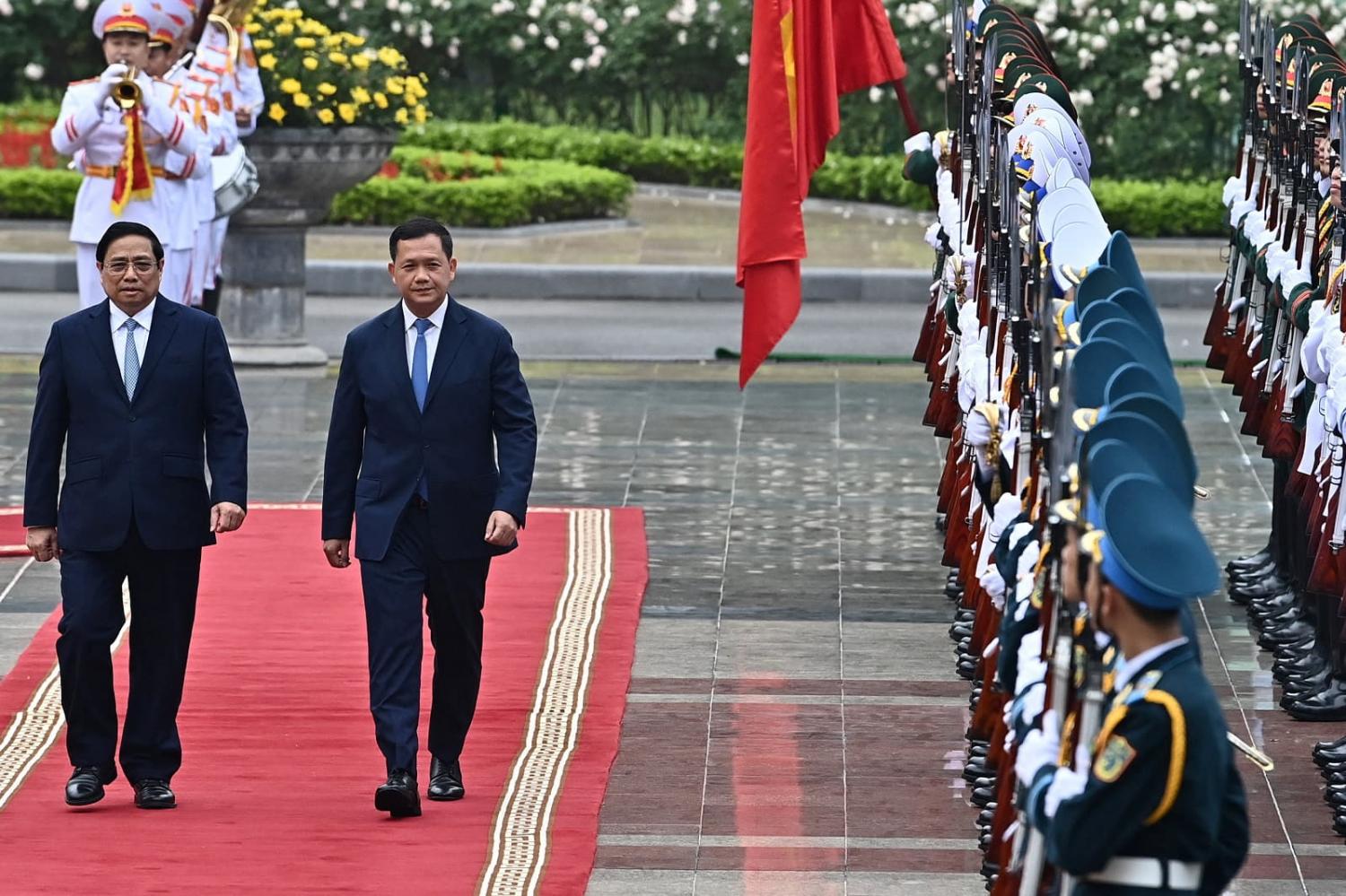Cambodia’s new Prime Minister Samdech Hun Manet paid his first visit to Vietnam in December with the goal of promoting “the traditional friendship and comprehensive cooperation between the two countries to new heights”. However, there are many obstacles behind the historical curtain that may prevent the achievement of these goals.
For centuries, the Mekong River Delta has witnessed a tumultuous relationship between Vietnam and Cambodia. From ancient empires clashing for dominance to the scars of recent wars, the delta holds memories of conflict and mistrust. While recent years have seen glimmers of cooperation, achieving a lasting peace remains elusive.
Although former prime minister Hun Sen’s transfer of power to his son Hun Manet in August 2023 appeared smooth, it belied internal challenges. Cambodian nationalism coupled with Hun Sen’s pro-Vietnamese past has led to repeated accusations, especially from opposition leader Sam Rainsy, that he has favoured Vietnam, particularly regarding land concession licences.
Roots of rivalry
The seeds of tension were sown as early as the 7th century, when the Chenla Empire (Cambodia) and the Dai Viet Empire (Vietnam) vied for regional supremacy. Centuries of skirmishes and territorial exchanges followed, shaping a delicate geopolitical landscape. The 19th century saw the rise of the Vietnamese Nguyen Dynasty, whose southward expansion annexed territory still considered by some Cambodians as “Kampuchea Krom”. This is a wound that continues to fester.
The most recent and brutal chapter unfolded in the Cambodian–Vietnamese War (1978–89). Driven by the atrocities of the Khmer Rouge regime, Vietnam intervened, toppling the genocidal government but leaving a legacy of deep mistrust and resentment. The Khmer Rouge’s targeting of Vietnamese communities – with the chilling term “cáp duồn” (to behead Vietnamese) still echoing in some ears – cast a long shadow on relations.
Beyond official narratives
Understanding public perceptions is crucial, as historical accounts alone cannot capture the emotional undercurrents shaping the relationship. This is why research exploring how both Vietnamese and Cambodians view these historical conflicts and their impact on their lives is needed to bridge the gap between textbook narratives and these lived experiences.
Official narratives often paint a picture of cooperation in trade and investment. But unresolved border disputes, unexploded ordnance from past conflicts, and differing political systems create obstacles. The ghosts of the past continue to linger, hindering progress towards true reconciliation.
The road to lasting peace
The conflict between Vietnam and Cambodia persists, with anti-Vietnamese protests in Cambodia sometimes even led by Buddhist monks, traditionally seen as neutral. This has created difficulties for the Vietnamese community living in Cambodia, reflecting the historical tensions between the two nations.
The presence of Buddhist monks in the protests is particularly noteworthy, given their significant influence in a country where Buddhism is the state religion. This suggests that Hun Sen’s strategic shift towards China might be an attempt to win over his people.
Building a lasting peace between Vietnam and Cambodia demands confronting the core issues that fuel their historical conflicts. It is crucial to identify the factors that keep these conflicts smoldering, understand the public’s views on achieving peace, and develop educational programs that foster mutual respect and understanding. Reducing the distance between historical narratives and contemporary experiences is key to achieving this. By doing so, Vietnam and Cambodia can finally move beyond conflict and build a lasting peace.
There is no quick fix. It requires a genuine commitment from both sides to acknowledge the past and address historical grievances. Public education programs engendering empathy and historical awareness can bridge the gap between generations. Building trust through practical cooperation in areas of common interest, such as environmental protection and economic development, can further incentivise peaceful collaboration.
The Mekong River Delta, a silent witness to centuries of conflict, can also become a symbol of cooperation. Joint conservation efforts and sustainable development initiatives along its banks can foster a sense of shared responsibility and interdependence. The journey towards lasting peace will be long and arduous, but through sustained dialogue, genuine reconciliation, and practical cooperation, Vietnam and Cambodia can finally navigate their shared history and chart a course towards a peaceful future.

